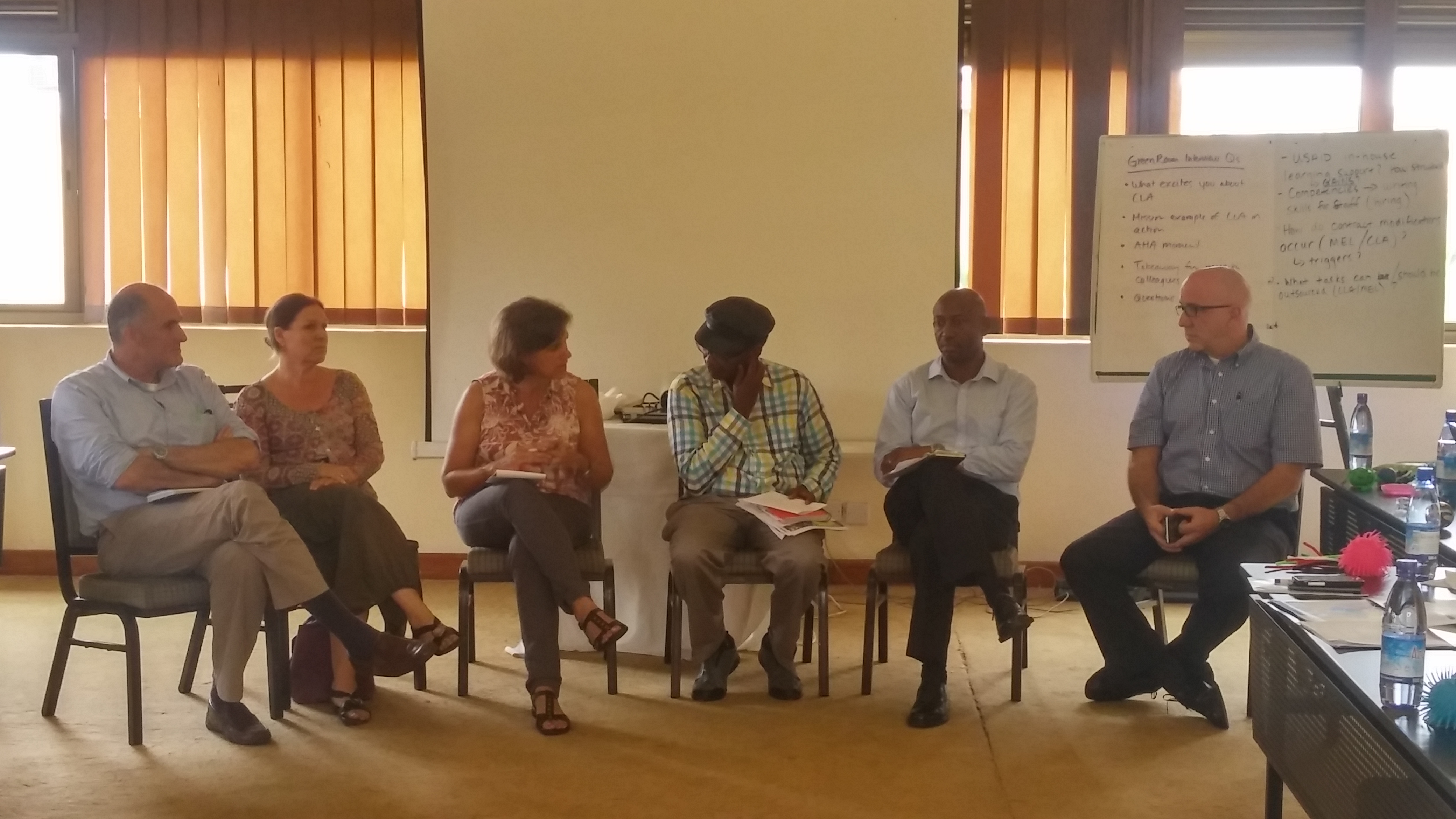CLA is a Journey: Reflections on a CLA Peer Sharing Event
Lorine Ghabranious is a Learning Fellow with the USAID Africa Bureau and Jessica Ziegler is a Learning Specialist with the USAID LEARN contract that supports the USAID Bureau for Policy, Planning and Learning.
As described earlier this week in “CLA in Action: Five Missions Gather to Learn from Each Other,” USAID/Uganda recently hosted a CLA Peer Sharing Event in Kampala, Uganda that brought together staff from five different missions, as well as Washington-based representatives (namely, us, your blog authors). Peers in various stages of their CLA maturity met for three days of honest exchange about some of their current challenges, as well as successes, on their CLA journey so far.
Below are some of our observations from the week:
Lorine: Reflections from a Learning Fellow

Your entry point into CLA isn’t as important as joining the journey.
One mission drew similarities between the CLA journey and a railway turntable, noting that the point of entry isn’t the same for all. Entry opportunities may look like a restructured portfolio review, a mid-point stock-taking exercise, or even strong leadership support. Where and how you begin isn’t as important as setting intention and focus on these efforts once on the track.
Creating an Enabling Environment
One of the building blocks of the CLA framework is an enabling environment. USAID/Uganda shared their evolution of the “Mission of Leaders, “ which encourages all staff to be leaders by showcasing how they continually “walk the talk” with action and strategy. While it has taken time for such an environment to be developed and fostered, staff have a better understanding of each other and feel empowered. So much of CLA depends on relationships and at the heart, people.
Pause and Reflect
It is safe to say that working within development is complex but CLA can provide the much needed time and space to take a step back, ask the hard questions, and have the necessary conversations. By intentionally pausing, reflecting, and building in the flexibility to adapt, missions highlighted how they are able proactively course correct and support more effective development goals.
Use Context to Monitor
Especially in complex environments, having a pulse on what is happening on the ground goes a long way. It is important to scan our environment and observe what is going on around us. Complexity-Aware Monitoring (CAM) can help to ensure that our M&E is taking into account the pace of change, blind spots, and the consideration of relationships, perspectives and boundaries.
Jessica: Yes, and...
I had many of the same observations (especially about how CLA looks different for everyone and about the importance of the culture and enabling conditions for CLA) about the participating missions’ CLA journeys. I’d also like to offer some additions thoughts:
Balancing strategic and opportunistic CLA
Although participants talked about the need to set a vision for their CLA journey to help them be strategic in how they collaborate, learn, and adapt, this doesn’t mean defining a monolithic CLA strategy from the outset and sticking to it come hell or high water. It is important to also keep an eye out for opportunities to inject CLA into processes and practices as they arise. If CLA helps strengthen that particular process or practice, it can be incorporated into the strategy—learning and adapting in action!
Roles, responsibilities, and resources
A dedicated CLA champion is a necessary, but not sufficient, resource. In addition, others must see how they play a role in collaborating, learning, and adapting. Maybe it’s a Project Management Team leader who helps facilitate synergies across various activities within the Project through joint work planning. Maybe it’s an M&E point of contact who helps their team develop a learning agenda to guide context monitoring efforts. Maybe it’s a Contracting Officer who can advise technical staff on using more adaptable mechanism types. And because all of these things take time, it’s definitely a leadership team who support and encourage staff to practice CLA.
AORs and CORs are another critical resource for CLA—they set the tone with implementing partners, who in turn, have their own roles and responsibilities in putting CLA into action. And none of this is perfectly free—even if we try our best not to be additive. As one chief of party who participated in CLA Peer Sharing Event said, “there is a cost to collaborating, learning, and adapting, but the cost of not doing it is much higher.”
KM—A tough nut to crack
Despite all of the research and literature on knowledge management “best practices,” this is still an area where many in the development industry struggle, especially since we are so geographically dispersed, context-driven, and deal with a workforce constantly in flux with staff transitions. Beyond talk of systems (which is a rabbit hole we wish to avoid, even if it did come up during the CLA Peer Sharing Event), the missions recognize the need to address expectations and behaviors. We’ll keep our eyes and ears open as missions like Southern Africa work to crack this nut as part of their CLA journey.



